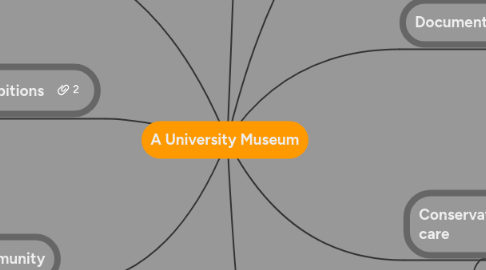A University Museum
by Erica Ander


1. Research
1.1. subject specific research
1.2. conservation and imaging research
1.3. Museology research e.g. sense of touch
1.4. Practitioner research e.g. collections review
1.5. Audiences/learning/wellbeing e.g. Heritage in Hospitals
2. Community
2.1. Public engagement
2.2. Events
2.3. Media/public relations
2.4. Open days
2.5. Hosting researchers
2.6. Community group projects e.g. ESOL at the Petrie
3. Exhibitions
3.1. Strang Print Room
3.2. Petrie Museum
3.3. On-line exhibitions
3.4. Cloisters exhibitions
3.5. Levantis Gallery, Institute of Archaeology
3.6. Dispersed artworks and science collections
4. Marketing/fundraising/ advocacy
4.1. Website
4.2. value to the University/ inclusion in uni priorities
4.3. Involvement with heritage projects e.g. Effective Collections
4.4. Attendance at fairs and conferences
4.5. museum events
4.6. Fundraising for capital projects
5. Collecting
5.1. Buy
5.2. Donations
5.3. Bequests
5.4. Fieldwork
5.5. Staff and research of University
6. Education/Learning
6.1. Internships and volunteers
6.2. School groups
6.3. Outreach
6.3.1. Loan boxes
6.3.2. Care homes
6.3.3. Hospitals
6.3.4. Adult groups e.g. U3A or refugee groups
6.4. University students
6.4.1. Moodle
6.4.2. Hands on sessions/practicals
6.4.3. Tours
6.4.4. Object based courses
6.4.5. Transferable skills
7. Documentation
7.1. Document and accession new acquisitions
7.2. Documentation of backlog
7.3. Collections review: reviewing all of collection and using new guidelines on disposal
7.4. New exhibitions and research projects bring knowledge to collections
7.4.1. Exhibition catalogues
7.5. Transfer of records to electronic museum catalogue: Adlib
8. Conservation/collections care
8.1. Preventive conservation
8.1.1. Temperature/humidity
8.1.2. Storage
8.1.3. Handling
8.1.4. Security
8.1.5. Light
